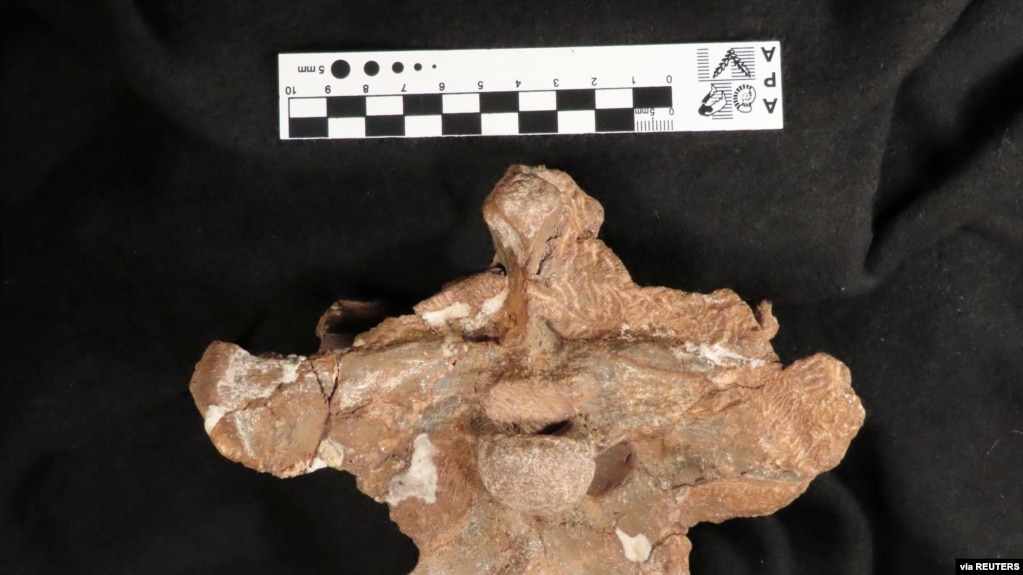
Part of a skull base of a dinosaur is pictured after Argentine scientists discovered a new species of carnivorous dinosaur, in Buenos Aires, Argentina December 27, 2019. Picture taken December 27, 2019 National Scientific and Technical Research Council/Handout via REUTERS
Scientists in Argentina have found the ancient remains of a new species of meat-eating dinosaur.
They say the creature lived about 70 million years ago and had very small arms and a large head. The researchers say it may have used its head to beat and capture prey.
The skull of the dinosaur, named Guemesia ochoai, was discovered in Argentina’s northwestern Salta province.
Researchers said it likely belongs to a meat-eating, or carnivorous, group of dinosaurs called abelisaurs. These dinosaurs walked on two legs and had very short arms, even shorter than those of North America’s Tyrannosaurus rex.
The short arms may have forced Guemesia to depend more on its powerful skull and jaws, the researchers said.
Federico Agnolin is the lead writer of a study on the dinosaur that was published in the Journal of Vertebrate Paleontology.
Guemesia is so different from other meat-eating dinosaurs “which allows us to understand that we’re dealing with a totally new species,” Agnolin said.
The animals existed for a few million years before an asteroid hit what is now Mexico’s Yucatan peninsula. That event, about 66 millions years ago, led to a series of disasters that killed all the dinosaurs and many other animals. In total, about 75 percent of Earth’s species were destroyed as a result of the asteroid.
Scientists believe abelisaurs lived on what is now Africa, South America and India. Several abelisaurs have been dug up in Argentina in the past but almost all of them were in southern Patagonia, far from the site where Guemesia was found.
“We know it had a very sharp sense of smell and was shortsighted,” said Agnolin. He noted also that the animal would have walked upright on its large feet, with its weighty head leading the way.
“Some scientists think that could mean the animal hunted its prey by charging them with its head,” he added.
Guemesia takes its name from Argentine independence hero Martin Miguel de Guemes and Javier Ochoa, a museum worker who made the discovery.
I’m Caty Weaver.
Miguel Lo Bianco and Claudia Martini reported on this story for Reuters. John Russell adapted it for VOA Learning English.
____________________________________________________________________
Words in This Story
species – n. biology : a group of animals or plants that are similar and can produce young animals or plants :
prey — n. an animal that is hunted or killed by another animal for food
allow — v. to make it possible for something to happen
shortsighted – adj. unable to see things that are far away